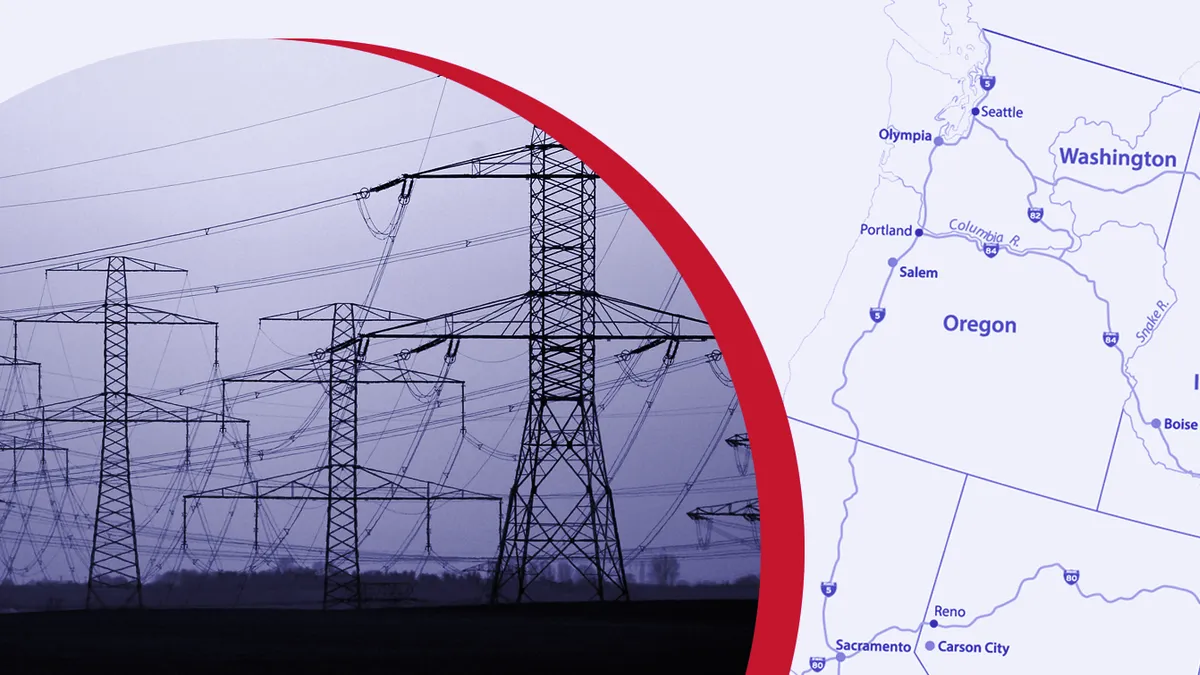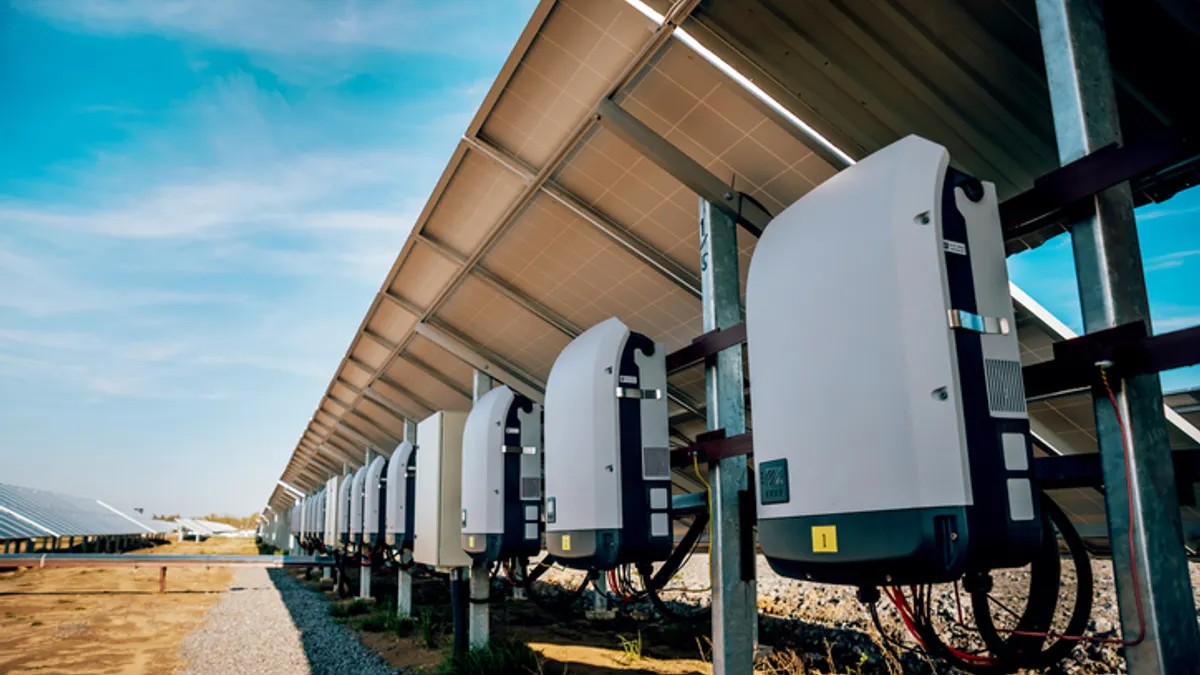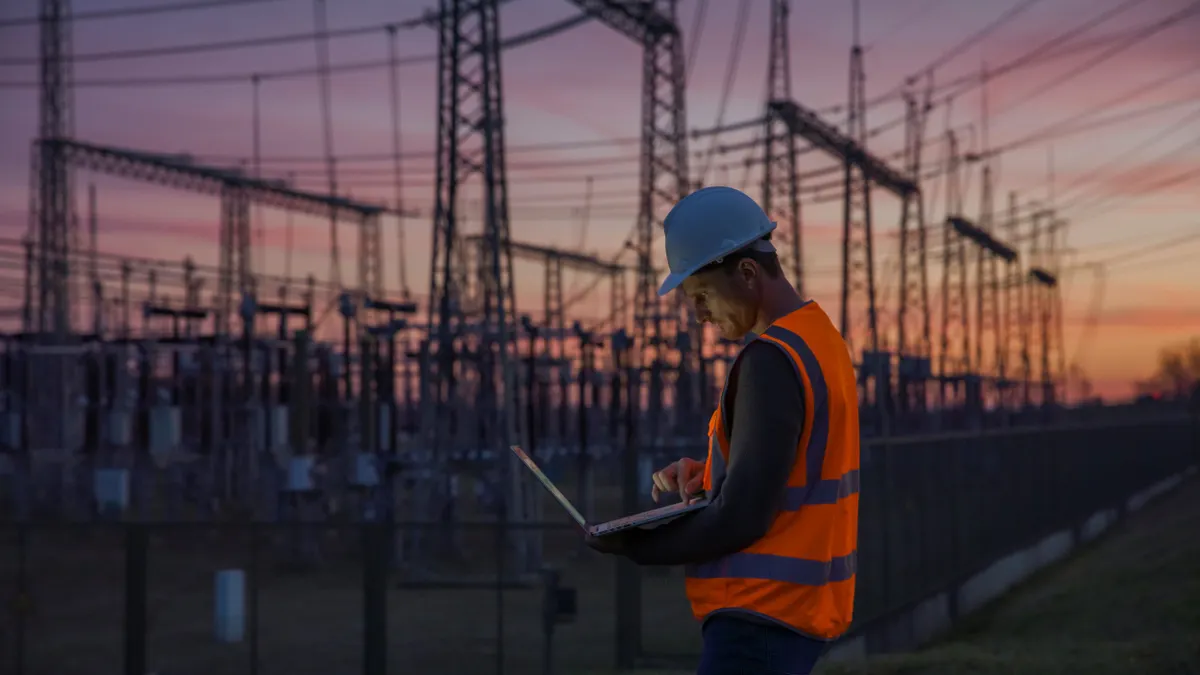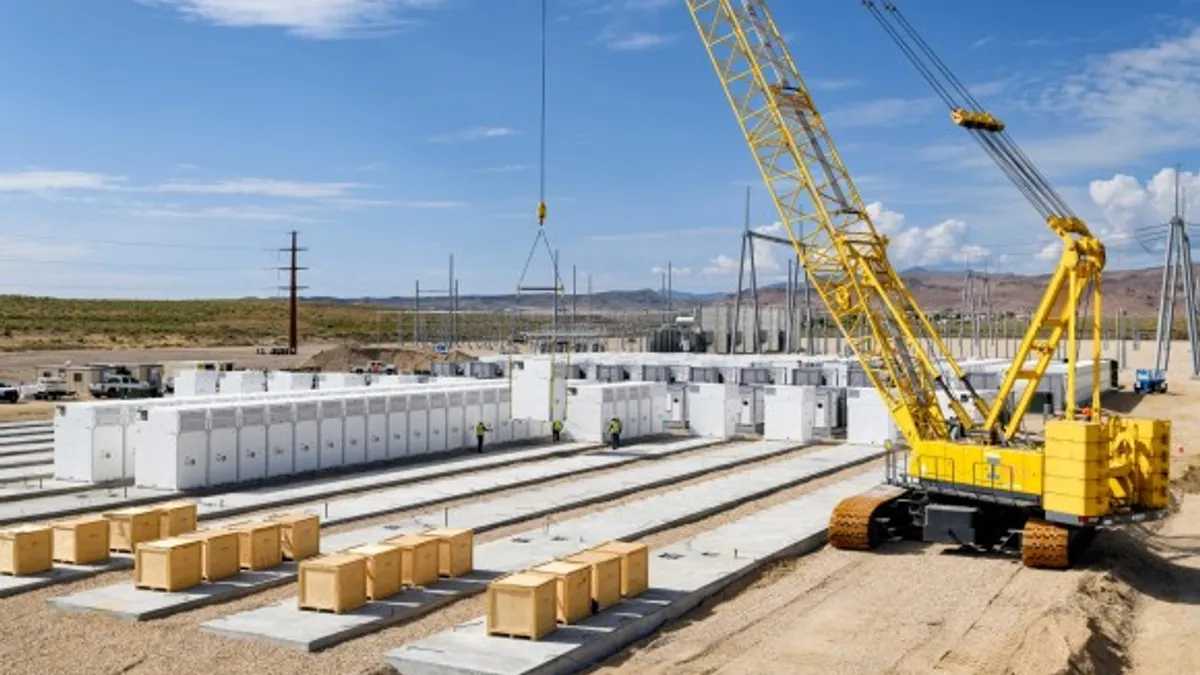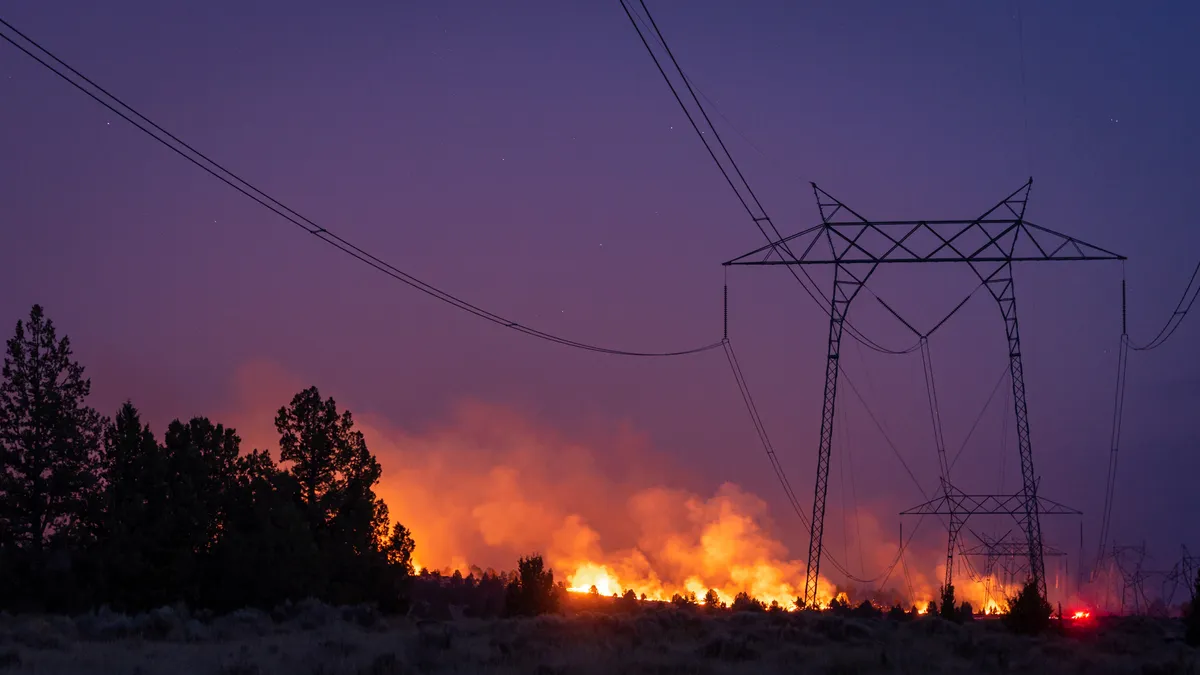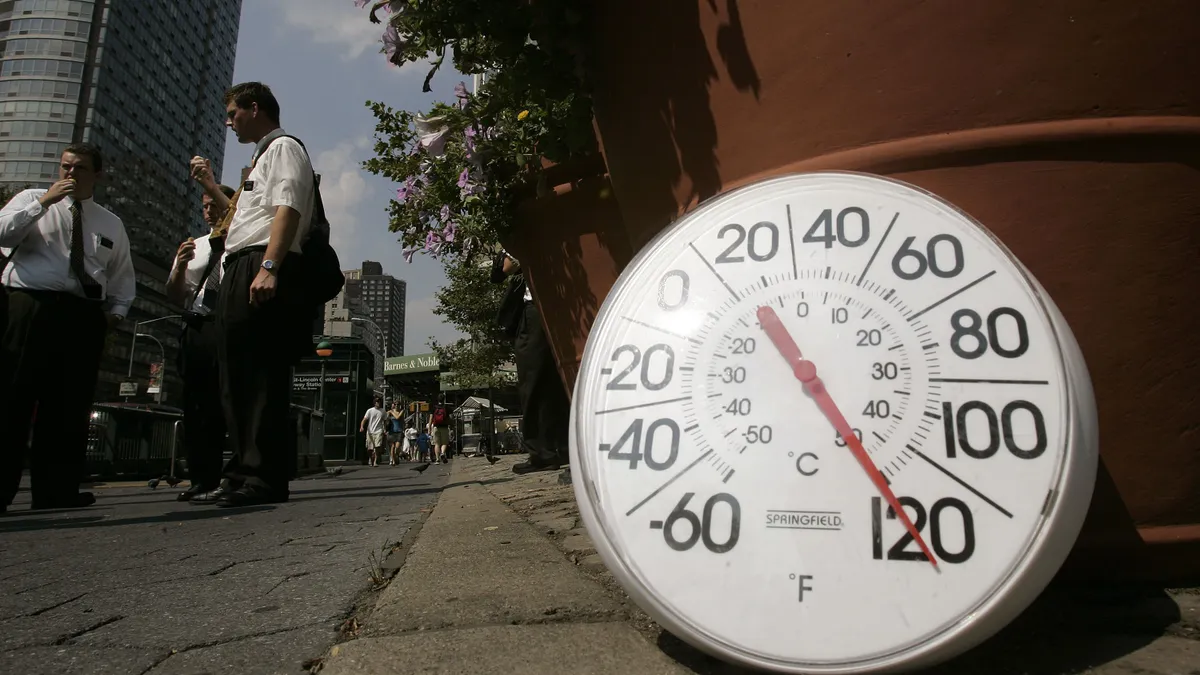This story is the first in a three-part series from Utility Dive exploring the grid reliability challenges that different regions in the U.S. face and how the electric sector is tackling them.
This past summer, the Pacific Northwest experienced a heat wave that served as something of a wake-up call for the utility sector.
The region experienced record-breaking temperatures in July — Portland, for instance, touched 116 degrees and broke records three days in a row — leaving utilities racing to prepare their infrastructure and urge customers to save energy.
Thousands of customers faced blackouts during the heat wave weekend, caused not because of resource adequacy issues, but because some equipment couldn't handle the heat. Experts are concerned that things could have been a lot worse had conditions in the rest of the Western U.S. been different at the time — a sign, they say, that policymakers need to take a closer look at how extreme temperatures can affect grid reliability.
"Had we had a situation during the heat wave in the Northwest where California was also at peak usage, we may have had some issues, certainly," said Frank Afranji, president of the Northwest Power Pool (NWPP). "We may have run into a lack of capacity to be able to meet the load needs."
The Pacific Northwest's energy sector isn't alone in scrutinizing the ways in which a changing climate could affect the grid. All over the country, regulators and utilities are facing unique challenges when it comes to keeping the lights on. Last summer, a heat wave in California forced the state's system operator to initiate outages, after which regulators began approving a suite of decisions to shore up the grid over the next few years. In Texas, meanwhile, millions of customers experienced devastating, deadly blackouts during a cold snap earlier this year, prompting a closer look at weatherization requirements for generators and transmission providers.
Experts say that every region of the U.S. is likely to face challenges in maintaining reliability because of more extreme temperatures, changes in power demand patterns from the effort to electrify the transportation sector and built environment, and a transitioning energy system that is integrating higher levels of variable resources, like wind and solar. In the Southeast, for instance, utilities that are traditionally used to summer peaking events have taken the Texas storm as a reminder that they will need to protect themselves from year-round extreme weather. In the Northeast, meanwhile, utilities need to cope with summer heat waves that can stretch resources, as well as hurricanes and winter storms that can destroy grid equipment.
Utility Dive spoke to regulators, utilities and experts in three different regions of the country — the Pacific Northwest, Northeast and Southeast — to get a better understanding of the reliability challenges they are anticipating and what they are doing to address them.
The three biggest reliability concerns
The Pacific Northwest's electricity system, much like the rest of the country, is going through a period of dramatic change, a draft 2021 power plan prepared by the Northwest Power and Conservation Council in September notes. The region is moving toward increasing amounts of renewable energy and anticipating the retirement of coal power plants, among other things. Along with this transition, "individual utilities, which have varying access to electricity markets and varying resource needs, will require near-term investments in generating and energy efficiency resources to meet their adequacy and reliability needs," the plan said.
For regulators, reliability-related challenges are a high priority, not only because reliability has always been a prime concern, but also because it's important for climate policy, according to Megan Decker, chair of the Oregon Public Utility Commission.
"There's really no better way to undermine important progress that the energy sector is making on climate than to have reliability disruptions become frequent, and associated with mitigation," she said.
"We have to begin moving beyond historical evidence to understand how load reacts when temperatures reach such extremes."

Megan Decker
Chair, Oregon Public Utility Commission
One of the key issues that reliability planners in the Pacific Northwest need to figure out is the changing temperature patterns and how they impact demand as well as resource supply.
The heat wave this summer was "definitely a wake-up call about how high the summertime demand can get," Arne Olson, senior partner with Energy and Environmental Economics, said.
"I think what the last year has taught us — from Oregon all the way to the experiences in Texas, really — [is] to try to imagine the unimaginable, if you will," agreed Decker, adding, "We have to begin moving beyond historical evidence to understand how load reacts when temperatures reach such extremes."
For regulators, this means refining load forecasting models. In addition to thinking about how load reacts to temperature, regulators also have to understand the role that load reduction and flexibility can play, said Decker.
On the supply front, the key concern for the Northwest is "water, water, water," said Ben Kujala, director of power planning at the Northwest Power and Conservation Council.
Hydropower generation meets anywhere from half to 90% of the electricity demand in the footprint the council analyzes, Kujala said, so reliability is always a function of a particular year's precipitation and snowpack. With warmer winters, it's possible that the area will see more water in the system in the winter, meaning there will be less water left in the summer.
"There [are] some definite seasonal challenges that come from climate change — or it aggravates existing seasonal challenges that we already have," Kujala said.
The growing number of electric vehicles on the road, as well as efforts to electrify the built environment, add another layer of complexity to demand forecasting, making it "one of the most difficult times right now to be planning," said Kujala.
The potential of new and existing buildings to switch from natural gas to electric heating would by itself cause a massive change in the system, Kujala said.
"I don't think anyone is super prepared" for a future where we're electrifying everything, he explained, "just because it's so hard to [prepare]. You would have to invest so much money, and if you're wrong, it would look so bad to go out and spend a bunch of money on something that just doesn't materialize."
Western resource adequacy program 'a good first step'
Utilities, regulators and planners can and are approaching the broader question of reliability in different ways.
"The first thing to do is make sure that they're adopting the best practices with regard to resource adequacy planning — leveraging diversity across the region to make the best use of existing resources," Olson said. If studies do identify potential shortfalls, each utility will need to decide what resources it should add to its system to meet that.
Utilities are "in a lot of ways scratching their heads and trying to figure out themselves what's the next step."

Ben Kujala
Director of Power Planning, Northwest Power and Conservation Council
At the Oregon PUC, a key vehicle to push forward modeling around new load and weather patterns, as well as new resource technology types, is the agency's integrated resource planning process, according to Decker.
But these plans only focus on individual utilities' systems, Decker noted. In this context, she pointed to the NWPP's Western Resource Adequacy Program as a good first step toward getting a better picture of regional reliability conditions, as well as potential cost efficiency opportunities.
The effort, launched before either the California or Texas outages occurred, is designed to enable reliable integration of all the new renewable energy across the West, NWPP experts explained. It currently has 24 participants from 10 states and one Canadian province, with about 67,412 MW of load.
So, for instance, if load begins to pick up in Montana, Utah or Wyoming before it does in Seattle or Portland, or the wind is blowing in one part of the program's footprint while solar is waning in another, the effort aims to efficiently coordinate resource sharing across this swath of the West, Afranji explained.
The NWPP selected the Southwest Power Pool as the program operator. The program will model the capacity need for the footprint annually, looking two and five years ahead, explained Maya McNichol, manager of program logistics at the NWPP, in an email. Seven months ahead of each season, the participants will turn in a compliance showing to the program operator to demonstrate they have the required amount of capacity and transmission service. In real time, the program operator will communicate with participants to see if anyone is in a tight situation, and then it will be able to efficiently redirect energy or capacity from the entities that have surplus to the ones that have a deficit.
With these processes, "we're going to end up having, hopefully, investment savings [and] more transparency across the footprint," Afranji said.
The design phase of the program wrapped up by the end of July; in October, it moved into the first phase of implementation, in which participants will commit to meeting a non-binding resource adequacy standard without the threat of penalty. The program is expected to fully come into operation, along with penalties and real-time resource sharing, in 2024, according to McNichol.
‘There is no silver bullet'
Utilities, meanwhile, are "in a lot of ways scratching their heads and trying to figure out themselves what's the next step" in addressing reliability, clean energy requirements, and other decisions they face Kujala said, adding that many are turning to co-located solar and storage as a solution.
"Everybody is trying to find solutions, knowing that there is no silver bullet — nothing is going to make it perfect, but every tool that could be brought in would help," he added.
In its draft power plan, the Northwest Power and Conservation Council identified a resource strategy that "will propel the region through the changes while maintaining an adequate, efficient, economical and reliable power supply." This includes 750 to 1,000 average MW of cost-effective energy efficiency by the end of 2027, increasing to at least 2,400 average MW by 2041, and at least 3,500 MW of renewables by 2027. Public comments on the plan can be filed through Nov. 19.
Some utilities are already working to better understand the potential reliability challenges from shifting load patterns. In its most recent integrated resource plan, PacifiCorp identified the need to consider increasingly extreme weather and the challenges that poses to the grid in its planning process. The utility worked with the Northwest Power and Conservation Council to model how changing temperatures will affect peak load in its service area in the future. Basing its analysis on the temperature projections from the United States Bureau of Reclamation, the utility estimates that summer peaks could increase by approximately 50 MW between now and 2025 and by 318 MW by 2040. Winter peaks, meanwhile, are expected to be 259 MW lower by 2040, since higher temperatures in the winter lead to less heating load.
With a changing climate, "sometimes you'll get more extreme weather in isolated locations, and this past summer was a dramatic example of that," David Eskelsen, a spokesperson with PacifiCorp said. "Now we were able to deal with that, but it was a challenge because of the effect on the system."
Portland General Electric (PGE) has its eye on two categories of challenges, according to Sarah Edmonds, the utility's director of transmission and market services: the physical impacts of a changing climate, which require making systems more resilient, as well as resource adequacy. This winter, for instance, a storm in the utility's service territory knocked down a lot of wires, leaving some customers without service.
There are technological and tactical solutions to these problems, Edmonds said — for instance, installing more resilient conduit — but those sometimes come with their own challenges, and the utility is working with regulators and other stakeholders to figure out the right strategies to adopt.
"And for resource adequacy, it's more about looking farther ahead… and making sure that we're planning to bring new resources online, or contract with new resources, to handle not just our energy needs but our capacity needs for when the system is changing quickly," Edmonds added.
Regulators and utilities have also been looking at ways to handle transportation electrification, in part by forecasting electric vehicle loads in integrated resource plans, Decker said. They're also looking at how electric vehicles could actually help create a more flexible grid.
"I don't want to minimize the degree to which just more electric load could be difficult for resource adequacy, but, look — there is the potential that it might not be," she said. "There is the potential that it might just be helpful, it might lower costs, it might contribute flexibility if we do it right."
Some solutions come with their own problems
Addressing reliability threats in the Pacific Northwest isn't without its own challenges, and experts say that the first difficulty is building more transmission.
Generation in the Western interconnection tends to be far from load centers like San Francisco, Portland and Seattle, Afranji noted, and many utilities have attempted over the past couple of decades to build transmission wires to bring renewables from areas with heavy wind and solar generation to the load centers. But developing transmission faces several roadblocks, including local opposition.
"We're hoping that there would be nationwide legislation to find ways to allow for the addition of transmission… that's going to be the most difficult, and yet the most pertinent, issue in dealing with climate change, as far as we're concerned," Afranji said.
Getting new energy resources up and running can also present its own difficulties, Olson noted, from identifying a site to permitting, transmission interconnection and, more recently, supply chain issues.
PacifiCorp faces two main challenges in getting additional resources up and running, Eskelsen said. The first is navigating the regulatory process to approve those projects, which takes into account reliability as well as the cost to customers. The second is the local approval and construction process. Any time the utility builds a new wind farm or transmission addition, it needs to go through a local land use approval process, which could involve dealing with the federal government, state approvals, Native American tribes that have property ownership, and private owners, he said.
"So that ends up being a fairly detailed process that typically takes some years to bring a proposed project to actual construction. And then, of course, there [are] the challenges with the actual construction of any facility — the securing materials and personnel to actually do the construction," Eskelsen added.
And then there's the broader issue of ensuring that utilities are balancing cost considerations with strategies to shore up the grid. For utilities, this involves figuring out whether, in their resource planning, they assume that events that previously were considered once-in-a-century phenomena are now actually more like once-in-decades, Edmonds said. This requires striking a balance between procuring and building more resources to address extreme weather and minimizing customer costs.
"We just can't get away from that balance. It is our challenge to meet, but I don't know the answer yet, and I don't think anyone knows the answer" on whether or not to change utility assumptions around the expected frequency of extreme weather, she said.



